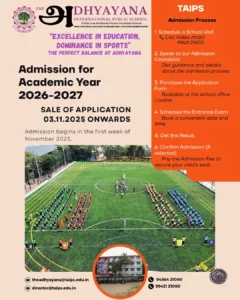Every parent and teacher wants children to grow confidently and creatively, yet academic lessons alone can’t provide everything students need to thrive. The benefits of extracurricular activities make them an essential part of a well-rounded education. From developing social skills to igniting passions, extracurricular activities play a powerful role in nurturing successful, balanced students. If you wonder why these activities matter so much, let’s explore their exciting impact starting right now.
Key Benefits of Extracurricular Activities
1.Boosting Confidence and Communication Skills
One of the most immediate benefits of extracurricular activities is how they help students build confidence. Whether it’s speaking in a debate, participating in drama, or playing a team sport, children learn to express themselves clearly and work with others. These opportunities foster communication skills and courage that transfer to the classroom and everyday life.
2.Discovering Passions beyond Academics
Students often find hidden talents and new interests through extra-curricular, which can spark lifelong hobbies or even career paths. From art and music to coding and sports, these activities allow exploration beyond textbooks, helping teenagers uncover what they truly enjoy and excel at.
3.Improving Academic Performance and Focus
It might seem counterintuitive, but the benefits of extracurricular activities also include better academic results. Balanced involvement encourages better time management, reduces stress, and keeps students mentally fresh. When students step away from studies to engage their creativity or physical energy, they often return to learning with more focus and enthusiasm.
4.Teaching Essential Life Skills
Beyond academics, extracurricular activities teach discipline, teamwork, responsibility, and leadership. Regular practice, meeting deadlines, collaborating with peers, and facing challenges prepare students for both higher education and the world of work. These life skills build resilience and independence.
5.Enhancing Physical and Mental Wellness

Active extra-curricular, like sports and dance, promote physical health, while arts and clubs provide emotional outlets that reduce anxiety. This balance supports overall wellbeing, helping students cope with academic pressures and everyday stresses.
6.Building Friendships and Social Connections
Participating in clubs or teams brings children together with peers who share their interests. These social bonds boost happiness and create a supportive network that enriches school life and personal growth.
How Students Can Make the Most of Extracurricular Activities
- Choose activities you genuinely enjoy to stay motivated.
- Set achievable goals within your club or team.
- Communicate openly with mentors and peers.
- Balance academics and activities through a study schedule.
- Take initiatives to lead or innovate in your activities.
Why Indian Parents and Teachers Should Encourage These Activities
In India, where academic pressure is high, extracurricular activities offer a refreshing balance. Schools that provide access and encouragement create environments where children thrive holistically. Parents and teachers can support students by helping them choose activities they enjoy, setting reasonable limits, and celebrating achievements beyond grades.
At The Adhyayana International Public School (TAIPS), a leading CBSE school in Coimbatore, we understand that the benefits of extracurricular activities extend far beyond the classroom. That’s why our curriculum integrates diverse clubs, sports, and creative pursuits tailored to nurture every child’s unique talents and growth. To experience how TAIPS supports holistic student development, visit our CBSE School today.




